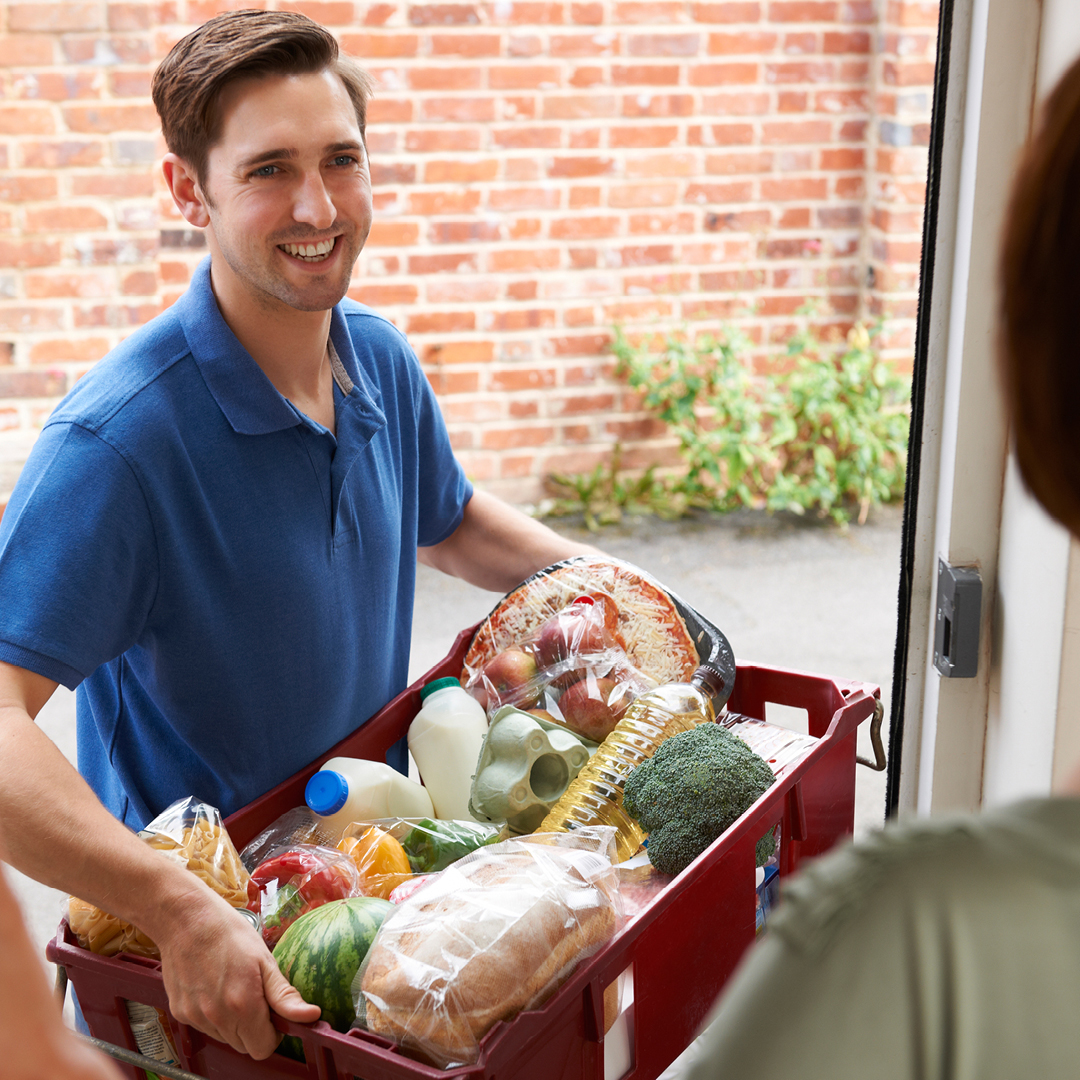If you’ve ever ordered a product online, you’ve likely experienced last mile delivery (sometimes called last mile logistics). But what exactly does it mean? Last mile delivery refers to the final step of the delivery process. It’s the journey of a product from a transportation or distribution hub to its final destination, typically a consumer residence.
For businesses managing this last stage of delivery is crucial – having a significant impact on customer satisfaction and overall logistics efficiency. Yet, it’s fraught with challenges.
From high delivery costs and complex route planning, to urban congestion, last mile delivery is a complex puzzle. It requires strategic planning and innovative solutions.
In this article, we explore what it is, its importance, the challenges it presents, and strategies for optimising last mile delivery operations.
Table of contents:
- What is Last Mile Delivery?
- Importance of last mile in e-commerce
- Common challenges in last mile delivery
- Tech innovations in last mile delivery
- Real-time tracking and AI
- Strategies for delivery optimisation
- The future of last mile delivery
What is last mile delivery?
Last mile delivery is the final stage in the logistics supply chain. It involves transporting goods from a distribution centre or warehouse to the end customer’s location. This phase is crucial as it directly impacts the customer’s experience. It’s not just about delivering a package; it’s about ensuring timely delivery, maintaining product quality, and providing a seamless experience to the customer.
The importance of last mile delivery in e-commerce
In the e-commerce era, last mile delivery has gained significant importance. It’s the touchpoint that directly connects businesses with their customers. A smooth last mile delivery process can enhance customer satisfaction, lead to repeat purchases and positive reviews. On the other hand, a poor delivery experience can deter customers from future purchases.
Therefore, optimising last mile delivery operations is crucial for e-commerce businesses. It’s not just about reducing costs, but also about improving customer experience and building a strong brand reputation.
Common challenges in last mile delivery
Despite its importance, last mile delivery is fraught with challenges. These challenges can significantly impact the efficiency of delivery operations and customer satisfaction levels.
The most common challenges include:
- High costs
- Delivery speed/ efficiency
- Road congestion
- Maintaining customer satisfaction
Each of these challenges requires specific strategies to overcome.
High costs and delivery speed
Last mile delivery is often the most expensive part of the supply chain. It accounts for a significant portion of the total delivery cost. This is due to factors like fuel costs, labour costs, and vehicle maintenance.
Moreover, customers today expect fast delivery. Meeting these expectations while keeping costs low is a major challenge for businesses.
Urban congestion and delivery windows
Urban areas present unique challenges for last mile delivery. Traffic congestion can lead to delays, affecting delivery speed and customer satisfaction. Additionally, coordinating delivery windows with customers can be complex, requiring efficient route planning and real-time communication.
Customer satisfaction and retention
The last mile delivery experience directly impacts customer satisfaction. Any delays or mishaps can lead to negative customer reviews.
Moreover, a poor delivery experience can affect customer retention. Businesses need to ensure a smooth delivery process to keep their customers coming back.
Technological Innovations in Last Mile Delivery
Technology plays a crucial role in addressing the challenges of last mile delivery. It helps businesses optimise their operations and improve customer satisfaction.
From route optimisation software to real-time tracking, technology is transforming last mile logistics. It is enabling businesses to deliver faster, reduce costs, and enhance the customer experience.
Moreover, the advent of AI, drones, and autonomous vehicles is revolutionising last mile delivery. These technologies promise to make delivery more efficient and sustainable.
Route optimisation software
Route optimisation software is a game-changer for last mile delivery logistics. It helps businesses plan the most efficient routes for their delivery vehicles. This not only reduces fuel costs but also ensures faster delivery. It’s a win-win for both businesses and customers.
Real-time tracking and AI
Real-time tracking gives customers visibility into their delivery status, this enhances the customer experience and builds trust. Whilst on the other hand, for businesses AI fleet optimisation is used to efficiently book delivery timeslots and optimise routes. It helps businesses stay ahead of the curve, reduce waste, and meet customer expectations.
Drones and Autonomous Vehicles
Drones and autonomous vehicles are being investigated as potential solutions for last mile delivery. They can deliver packages faster in some cases (particularly to remote or difficult to reach locations) and reduce human error, but don’t currently provide sufficient scale or reliability for widespread adoption.
Strategies for Delivery Optimisation
Optimising last mile delivery is crucial for retail and logistics businesses. It not only reduces costs, but also improves customer satisfaction. Here are some strategies for delivery optimisation:
- Reducing costs through efficiency
- Adopting sustainable practices
- Ensuring scalability and flexibility in operations
Reducing costs through efficiency
Efficiency is key to reducing last mile delivery costs. This involves optimising routes, reducing delivery times, and minimising fuel consumption. Technology plays a crucial role here. From route optimisation software to AI, it helps businesses streamline their operations and cut costs.
Adopting sustainable practices and local warehousing
Sustainability is becoming increasingly important in last mile delivery – driven by the government’s push for UK businesses to achieve the Net Zero emissions target by 2050 and broader consumer focus on companies operating in sustainable ways.
Businesses are adopting green practices, such as switching to electric vehicles (EVs) and optimising routes to reduce miles travelled and fuel consumption, to reduce their carbon footprint.
Training delivery drivers to drive in a more sustainable way, by minimising engine idling, avoiding harsh breaking and acceleration etc, is another widely adopted practice. This is typically paired with monitoring drivers’ behaviour via telematics devices and coaching them where improvement is needed.
Ensuring scalability and flexibility in operations
Scalability and flexibility are crucial in last mile delivery. Businesses need to be able to scale up or down based on demand, and this requires a flexible operation model. It allows businesses to adapt to changing market conditions and customer expectations.
The future of last mile delivery
The future of last mile delivery is exciting – with technological advancements and evolving customer expectations, the industry is set for major changes. New trends and innovations are emerging, and are reshaping the way businesses approach last mile delivery. Government regulations and ethical practices will also play a crucial role – significantly shaping the future of last mile delivery.
Emerging Last Mile Trends and Innovations
A major emerging trend in last mile delivery is the use of data analytics and leveraging AI to help businesses predict demand and optimise their operations. AI fleet optimisation solutions can help retailers and logistics companies optimise their fleet capacity, delivery routes, and miles per drop.
Role of Government regulations and ethical practices
Government regulations play a crucial role in last mile delivery. They set the rules for safety, emissions, and labour practices. Ethical practices are also important, as they safeguard fair treatment of workers and respect for the environment. This is crucial for the long-term sustainability of the industry.
Aligning last mile delivery with business goals
In conclusion, aligning last mile delivery with business goals is crucial. It not only improves operational efficiency, but also enhances customer satisfaction and contributes towards achieving sustainability goals. By understanding and implementing effective last mile delivery strategies, businesses can gain a competitive edge and drive growth in the ever-evolving e-commerce landscape.


